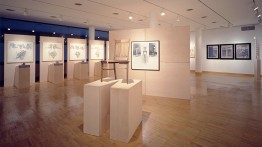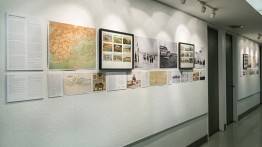School of Architecture Awarded IMLS Grant
POSTED ON: August 5, 2021
The Irwin S. Chanin School of Architecture Archive is pleased to announce that the School has been awarded $223,312 from the Institute of Museum and Library Services to process, preserve, digitize, and provide web-based access to its Exhibitions Collection. For over five decades, the School’s exhibitions have bridged pedagogy and public service by enriching The Cooper Union’s curriculum and serving New York City’s local and regional design community.
The School’s exhibition program is extensive and diverse, featuring the work of celebrated and emerging architects, designers, photographers, painters, builders, and sculptors, as well as faculty and students. It includes major exhibitions, typically held twice a year either in the Arthur A. Houghton Jr. Gallery or 41 Cooper Gallery. The School’s Third Floor Hallway Gallery hosts shorter, rotating shows focusing on work by new faculty, invited guests, and students, as well as material from the Archive’s collections. Several past exhibitions have addressed the school’s curriculum, drawing extensively from the Archive’s core Student Work Collection.
“The Exhibitions Collection is the perfect companion to the Student Work Collection,” said Steven Hillyer, Director of the Architecture Archive, “as the exhibitions we mount are meant to align with the pedagogical objectives of the School. Once this valuable collection is made available to the public, it will be possible to make a comparative reading between the work produced by Cooper students and the exhibitions the students were exposed to at that time.”
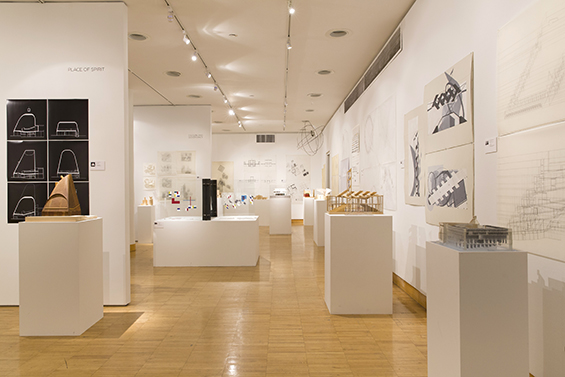
The collection’s material consists of 45 cu ft of analog records dating from 1965 – present, and over three terabytes of born-digital records dating from 1997 – present. These records correspond to four types of content: curatorial files detailing the process of developing and producing exhibitions and catalogs, typically through correspondence, sketches, layouts, notes, etc.; promotional material publicizing exhibitions via press releases, posters, and fliers; photographs depicting exhibition installations, events, and artwork; and catalogs showcasing work by exhibitors.
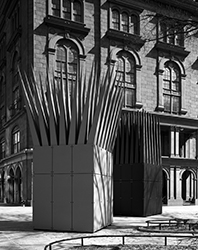
The pedagogical and public service impact of the School’s exhibition program has been substantial. For example, the School’s exhibition Coming to Light (2005) examined Louis Kahn’s unbuilt design from 1974 for the Four Freedoms Park memorial to Franklin D. Roosevelt. The exhibition’s favorable press coverage prompted a major gift that revived longstanding efforts to construct the park, which was completed on Roosevelt Island in 2012. More recently, Nivola in New York | Figure in Field (2020)—a well-received retrospective in Houghton Gallery that examined the work of Costantino Nivola—has contributed to a re-evaluation of the sculptor’s significance, including a current exhibition at the Magazzino Italian Art Foundation.
“There is possibly no institution whose archives and collections form such a central part of its pedagogical mission as Cooper Union,” noted Dean Nader Tehrani, “and to this end, I am extremely pleased to see this kind of support that helps us not only look back at our history, but create the basis of speculations looking forward. I applaud the entire team whose persistent efforts in Archival and Exhibitions work are such a critical part of our culture.”
The educational value of the School’s exhibition program extends beyond the content of the exhibitions themselves. Student participation in the production and installation of exhibitions—from gallery exhibitions to annual End-of-Year Shows—is both an important component of the Archive’s mission and emblematic of the School’s design studio culture and commitment to “learning by doing.”
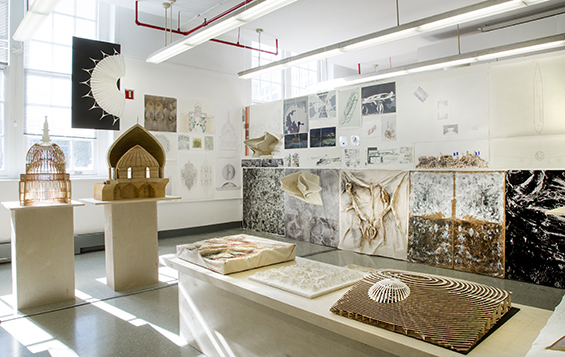
“In continuing the tradition of learning by doing, the Exhibitions Collection Digital Access Project will also require considerable student involvement in bringing the database to life,” said Project Manager Caitlin Biggers. “Like the Student Work Collection Digital Access Project, this effort will allow student assistants to engage with primary source material and develop archival skills while studying the history of their school. So the project really begins to give back to the community even before it's complete.”
PHOTOGRAPHY CREDITS
Lea Bertucci: New York City Beaches (2017); End-of-Year-Show (2018); How to Build a House: Architectural Research in the Digital Age (2019)
Hélène Binet: Jan Palach Memorial (2017)
João Enxuto: Drawing from the Archive: Analysis as Design (2014)
Liselot van der Heijden: Coming to Light (2005)
Michael Rogol: [UN]BUILT, 1960 – 1990 (1991)
Danny Wills: Architecture at Cooper: 1859 – 2009 (2009)

